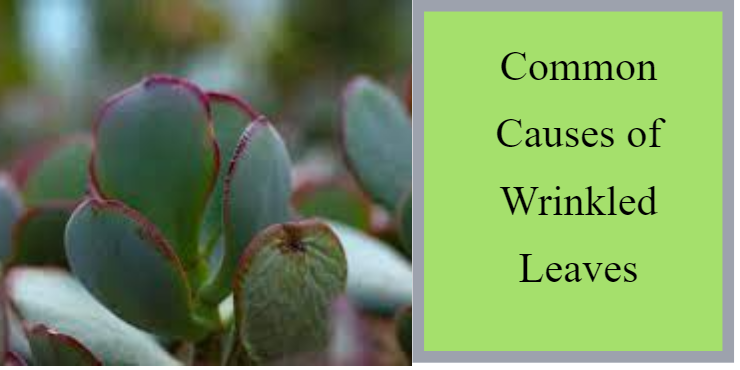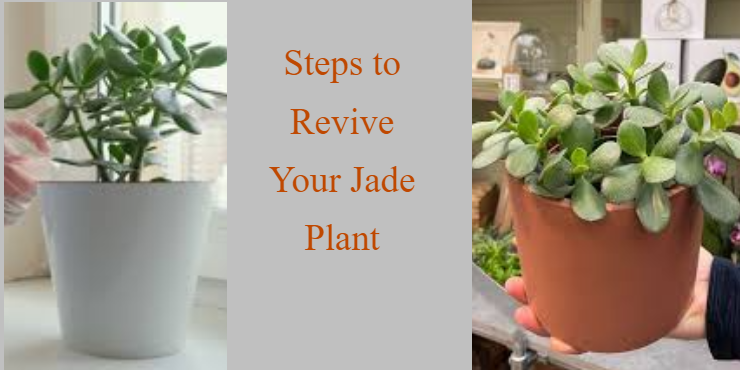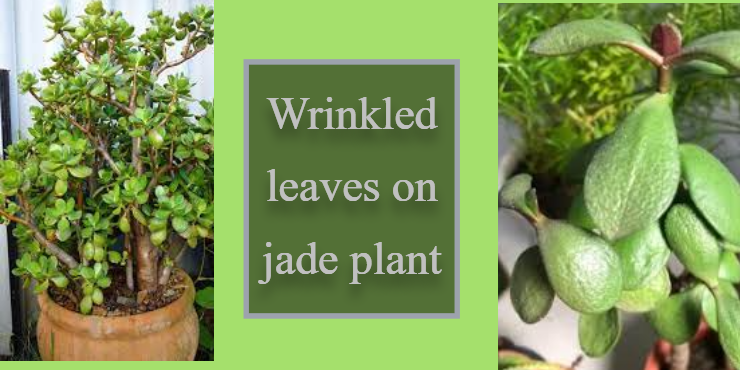Wrinkled leaves on jade plant, jade plants (Crassula ovata) are popular choices for their low-maintenance nature and unique appearance. However, if you’ve noticed wrinkled leaves on your jade plant, it might be signaling an underlying issue that needs attention. In this article, we’ll delve into the reasons behind wrinkled leaves on jade plants and provide you with actionable steps to restore your plant’s health and vibrancy.
Understanding Wrinkled leaves on jade plant
Before we dive into the causes and solutions, let’s familiarize ourselves with wrinkled leaves on jade plant. Jade plants are succulents native to South Africa and are known for their thick, fleshy leaves that store water. These plants thrive in bright, indirect light and are well-suited to indoor environments.
Overall, understanding jade plants involves appreciating their unique appearance, ease of care, and symbolic meaning. These low-maintenance succulents are a great choice for indoor gardening enthusiasts and can bring a touch of natural beauty and positive energy to any space.
Common Causes of Wrinkled leaves on jade plant

1. Underwatering
One of the most common reasons for wrinkled leaves on jade plants is underwatering. These succulents store water in their leaves, and if they don’t receive adequate moisture, the leaves can start to shrivel and wrinkle. In summary, underwatering is a common cause of wrinkled leaves in plants. Insufficient watering, improper watering schedules, environmental factors, and inadequate drainage all contribute to this issue.
Addressing and rectifying the underlying causes of underwatering is crucial to maintaining healthy, vibrant foliage and promoting the overall well-being of the plant.
2. Poor Soil Drainage
Jade plants require well-draining soil to prevent waterlogged roots. If the soil doesn’t drain properly, the roots may become stressed and unable to absorb water effectively, resulting in wrinkled leaves. To address the issue of poor soil drainage and wrinkled leaves, several solutions can be implemented. One option is to amend the soil with organic matter such as compost or peat moss.
This helps to improve soil structure, allowing for better water movement and drainage. Additionally, incorporating perlite or vermiculite into the soil can enhance drainage by creating air pockets within the soil.
3. Overwatering
Ironically, overwatering can also lead to wrinkled leaves. If the roots are constantly sitting in damp soil, they can’t access oxygen and may begin to rot, causing the leaves to lose their turgidity. Monitoring the weather conditions can also help prevent overwatering. During periods of rainfall or high humidity, plants may require less water as the soil retains more moisture. Adjust your watering schedule accordingly.
Inadequate light is a common cause of wrinkled leaves in plants. Whether due to low light levels, incorrect placement, insufficient duration of light exposure, or issues with artificial lighting, plants that do not receive the appropriate amount and quality of light can suffer from wrinkled leaves. It is important for plant owners to understand the light requirements of their plants and ensure they are providing the optimal lighting conditions for healthy growth.
4. Inadequate Light
Insufficient light can slow down the plant’s metabolism, causing it to use water less efficiently. This can lead to wrinkling as the leaves lose water faster than they can take it in. By addressing the inadequate light, plants can regain their energy production and have healthier, smoother leaves.
It is crucial to address this issue promptly by providing plants with the right amount and quality of light through relocation, trimming obstructions, or using supplemental lighting. By rectifying the inadequate light, plants can restore their photosynthesis and have smoother, healthier leaves.
5. Temperature Extremes
Exposure to extreme temperatures, whether too hot or too cold, can stress jade plants and result in wrinkled leaves. In summary, temperature extremes can cause wrinkled leaves in plants.
To address this issue, it is important to provide optimal temperature conditions, protect plants during extreme temperatures, and ensure proper watering and nutrient supply. Monitoring and timely intervention can help prevent or minimize leaf wrinkling caused by temperature extremes.
Steps to Revive Your Wrinkled leaves on jade plant

If your jade plant is looking a little sad and wilted, don’t worry! It’s not too late to revive it and bring it back to its healthy, vibrant state. Follow these steps to give your jade plant the care and attention it needs:
1. Adjust Watering Routine
Strike a balance between underwatering and overwatering by allowing the top inch of soil to dry out before watering again. Ensure that the pot has drainage holes. In addition to adjusting the frequency of watering, it is important to consider the environmental conditions. Jade plants prefer bright,
Lastly, it’s crucial to observe the overall health of your jade plant. If the wrinkled leaves are accompanied by other symptoms such as yellowing, wilting, or root rot, it could indicate a more serious problem.
In such cases, it is recommended to inspect the roots for signs of damage or disease and take appropriate action to treat the underlying issue. finding the right balance and providing optimal environmental conditions will help your jade plant regain its healthy and vibrant appearance.
2. Inspect Soil Drainage
Repot your jade plant in well-draining soil and make sure the pot has adequate drainage. This will prevent water from accumulating around the roots. Regularly monitor the plant’s condition and adjust watering accordingly.
Wrinkled leaves may take some time to recover, but with improved soil drainage, the jade plant should regain its health and vitality. Remember to practice regular maintenance, such as removing any fallen leaves or debris from the soil’s surface, to prevent further issues.
3. Monitor Light Conditions
Place your jade plant in a location with bright, indirect sunlight. Rotate the pot occasionally to ensure even exposure to light. Regularly assess the condition of the leaves. If you notice wrinkling or curling, it may indicate excessive or insufficient light exposure. In such cases, it is advisable to move the plant to a different location with more suitable lighting conditions.
Gradually acclimating the plant to a slightly brighter or shaded spot can help it adjust without causing further stress. Remember that light conditions can vary depending on the specific environment and season, so regularly monitoring and adjusting the lighting for your jade plant is crucial for its overall health and appearance.
With proper care and attention to its light needs, your jade plant will thrive and maintain its vibrant, unwrinkled foliage.
4. Temperature Management
Protect your plant from extreme temperature fluctuations. Keep it away from drafts and provide a stable environment. Temperature management is an important aspect of caring for jade plants, as they are extremely sensitive to changes in temperature. One visible sign of incorrect temperature is the appearance of wrinkled leaves on the plant.
When the temperature is too high or too low, jade plants may fail to absorb water properly, causing the leaves to become shriveled and wrinkled. This is because extreme temperatures can disrupt the delicate balance of water absorption and transpiration in the plant.
To rectify this issue, it is crucial to closely monitor the temperature around the jade plant and ensure it is within the ideal range of 65-75 degrees Fahrenheit (18-24 degrees Celsius). Providing adequate ventilation and avoiding exposure to drafty areas or direct heat sources is also essential. By maintaining appropriate temperature conditions, the jade plant’s leaves will remain smooth and healthy, promoting overall plant growth and vitality.
Conclusion:
Wrinkled leaves on jade plant are beautiful and resilient, but they require the right care to thrive. If you notice wrinkled leaves on your jade plant, consider the factors discussed in this article and take the appropriate steps to remedy the situation. By providing proper watering, suitable soil, adequate light, and a stable temperature, you can restore your jade plant’s health and enjoy its vibrant appearance.
FAQs
Q1: Can I save my jade plant if the leaves are severely wrinkled?
A: Yes, with proper care, jade plants can recover from wrinkled leaves and return to their healthy state.
Q2: Should I mist my jade plant to increase humidity?
A: Misting might not be necessary for jade plants. Focus on providing indirect sunlight and proper watering instead.
Q3: Can I use any type of soil for repotting my jade plant?
A: It’s best to use a well-draining succulent or cactus mix to ensure good drainage for the roots.
Q4: How often should I fertilize my jade plant?
A: Fertilize your jade plant with a balanced, diluted fertilizer every 2-4 weeks during the growing season (spring and summer).
Q5: Are wrinkled leaves always a sign of a problem?
A: While wrinkled leaves are often indicative of an issue, occasionally, jade plants may naturally wrinkle as they shed older leaves.
